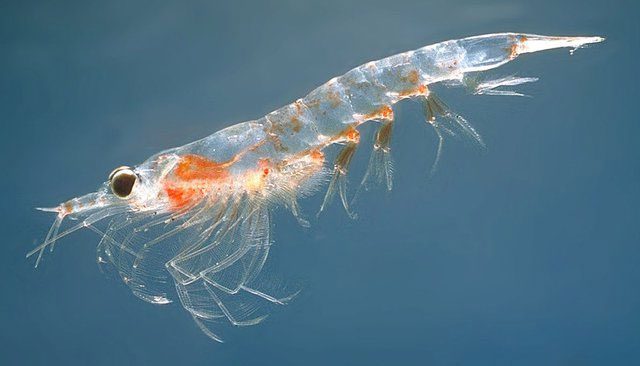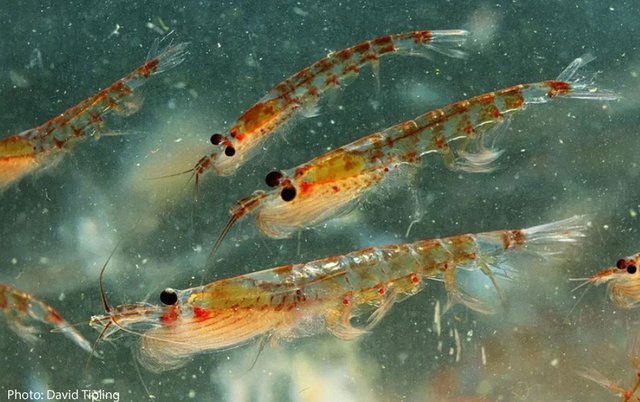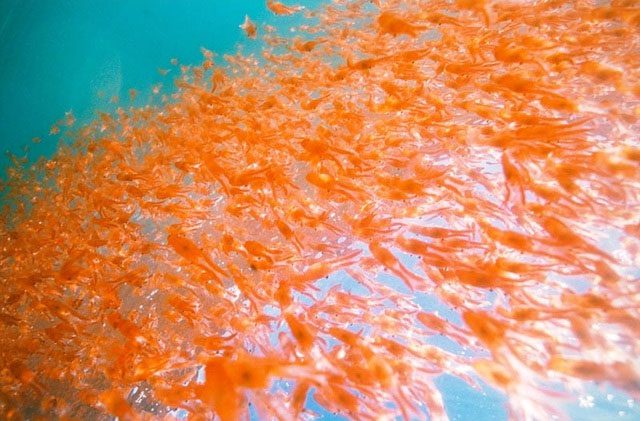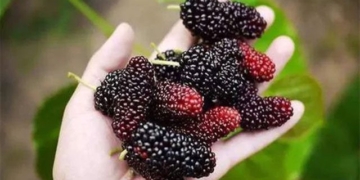Antarctica is one of the most remote continents located in the southern part of the Earth. Despite the extremely harsh weather conditions in Antarctica, a variety of unique animal species can still be found here. One of the species discovered in Antarctica that has completely changed scientists’ understanding is the Krill shrimp. Why do they hold this opinion?
In an article published in the journal Current Biology, scientists from the British Antarctic Survey (BAS) and the National Oceanography Centre, Southampton (NOCS) shared that they have discovered a strange crustacean species in Antarctica. The researchers also mentioned that they found these creatures while using a remotely operated underwater vehicle (ROV) named Isis to monitor the marine area.
This mollusk is known as Euphausia superba, or Krill shrimp. They have always been recognized as a primary food source for many species of fish, squid, penguins, seals, and whales. What is remarkable about Krill shrimp is that they typically inhabit shallow waters. However, in Antarctica, this shrimp-like crustacean lives at depths of 3,000 meters.

Krill shrimp are known to inhabit shallow waters. (Photo: Laitimes)
According to Professor Andrew Clarke, this finding contradicts previous understandings of Krill shrimp. This new discovery forces them to reconsider the distribution and ecological environment of this mollusk. Previously, they believed that most adult mollusks only lived at depths of 150 meters or more. However, after using the Isis ROV, scientists had the opportunity to observe the diversity of marine species living at depths ranging from 500 to 3,500 meters. They were surprised to discover Krill shrimp living and breeding on the deep ocean floor.
Moreover, Professor Clarke added that the habits of marine creatures, including species like Krill shrimp, turned out to be quite complex. In the future, the team of experts will continue to study and learn more about this crustacean and the marine ecosystem.

Scientists accidentally found Krill shrimp living at a depth of 3,000 meters in the Antarctic waters. (Photo: David Tipling)
Krill shrimp are small shrimp with a light red, almost transparent shell. The length of adult Krill shrimp reaches about 6 cm, and their lifespan is around 5 to 6 years. This Antarctic mollusk uses a specialized filtering system in its front legs to capture various types of microalgae, which it consumes as food. Thanks to this diet, Krill shrimp are rich in omega-3 fatty acids and phospholipids. Therefore, they have become the largest source of protein in the world.
Krill shrimp typically inhabit open waters in Antarctica. They live in large schools with an immense number of individuals. Their density can stretch for kilometers. It is estimated that the biomass of Krill shrimp reaches up to 500 million tons. With such numbers, Krill shrimp have become a crucial element in the food chain of many ocean species.
Significant Role in Global Climate
Krill shrimp are not only food for various marine species in Antarctica, but they also play an important role in the global climate. It all stems from the movement of Krill shrimp. According to scientists, they have measured the stratification of seawater before and after Krill shrimp movements.
The results show that warm, less dense water, which usually floats on the surface, sinks below. At the same time, colder water with higher salinity rises. This process helps significantly reduce the average temperature of the Earth. Especially since Krill shrimp often move in large schools, their activities can have a substantial impact on climate change.

Krill shrimp are not only food for many marine species but also have a significant impact on global climate. (Photo: Laitimes)
However, the current phenomenon of global warming is harming Krill shrimp. Over the past 50 years, the Antarctic Peninsula has warmed by 2.5 degrees Celsius. This phenomenon has led to the disappearance of icebergs. Losing their habitat and food sources, the population of Krill shrimp in Antarctica is rapidly declining.
Additionally, the increasing ozone layer depletion reduces the Earth’s ability to defend against ultraviolet rays. UV-B rays can harm crustaceans and increase the mortality rate of Krill shrimp. Therefore, quickly finding ways to protect Krill shrimp is one of the best methods to save our planet.





















































